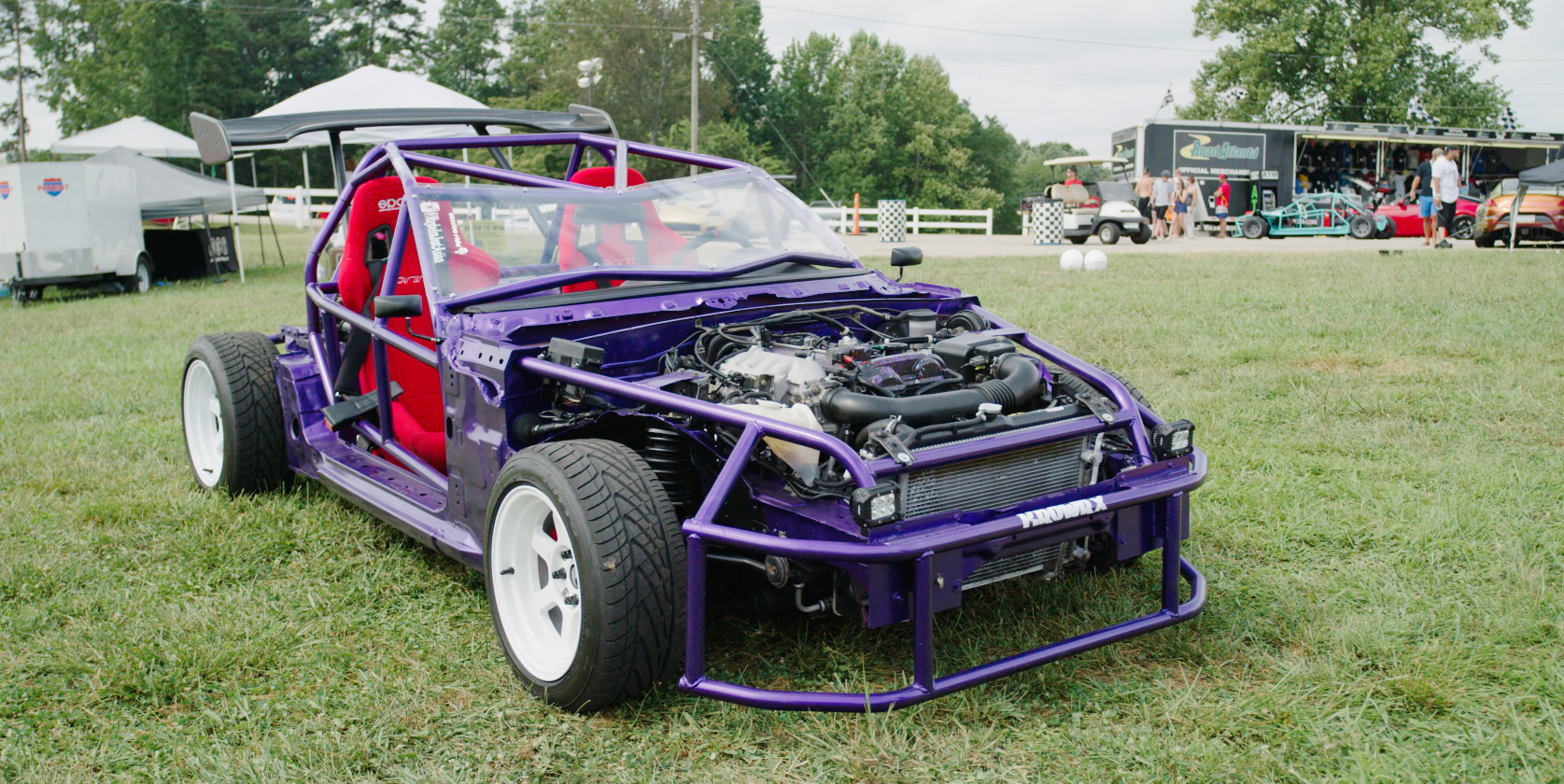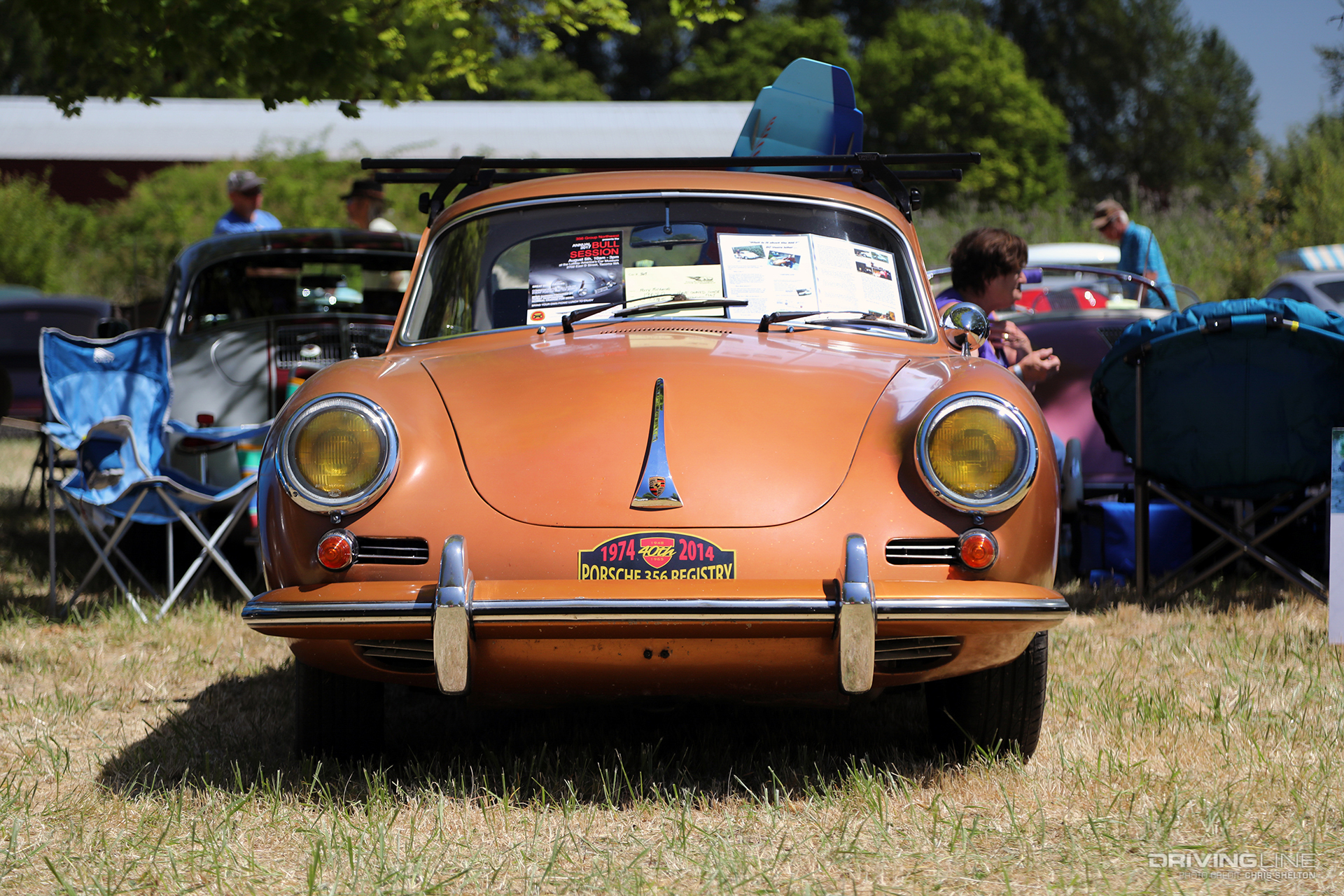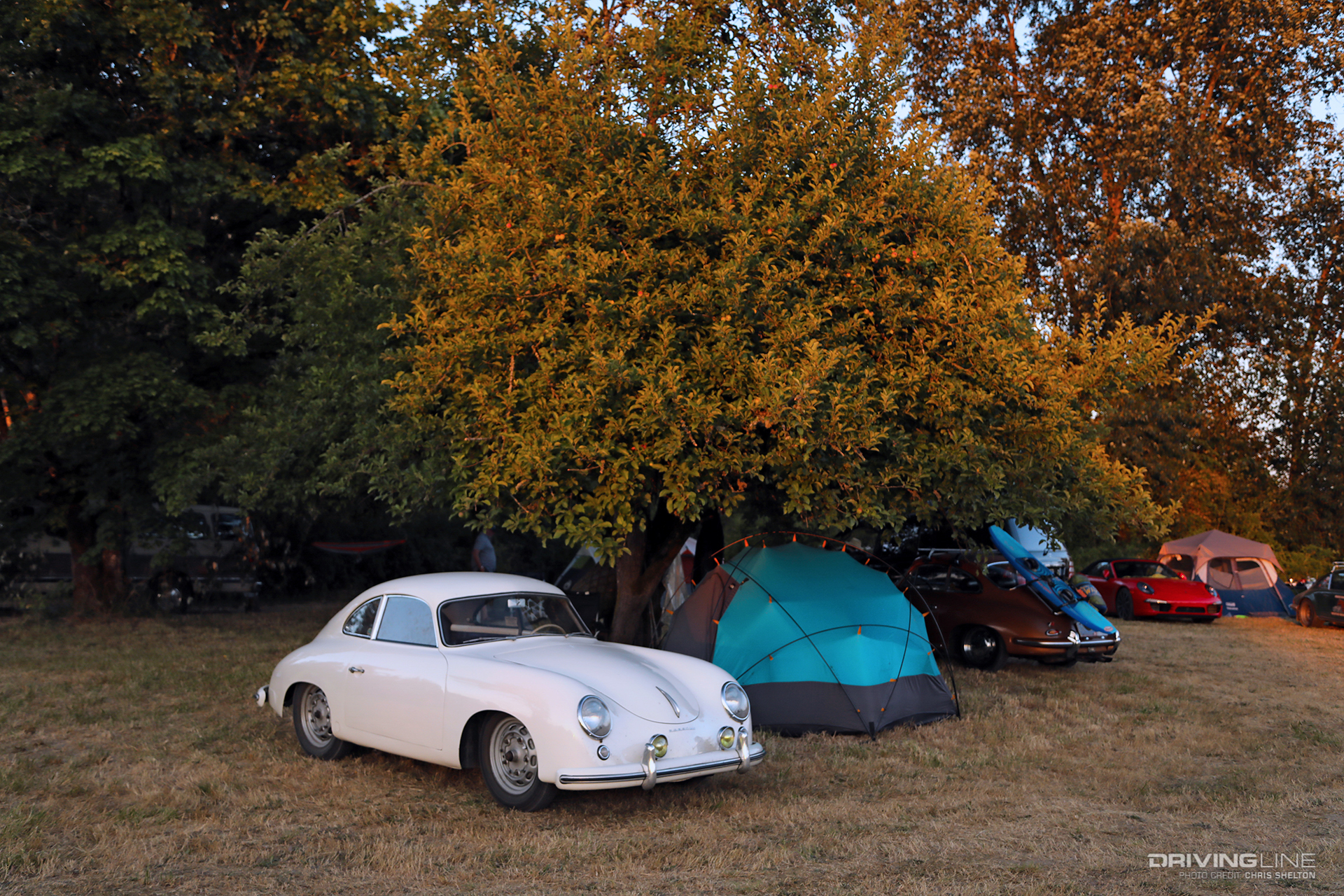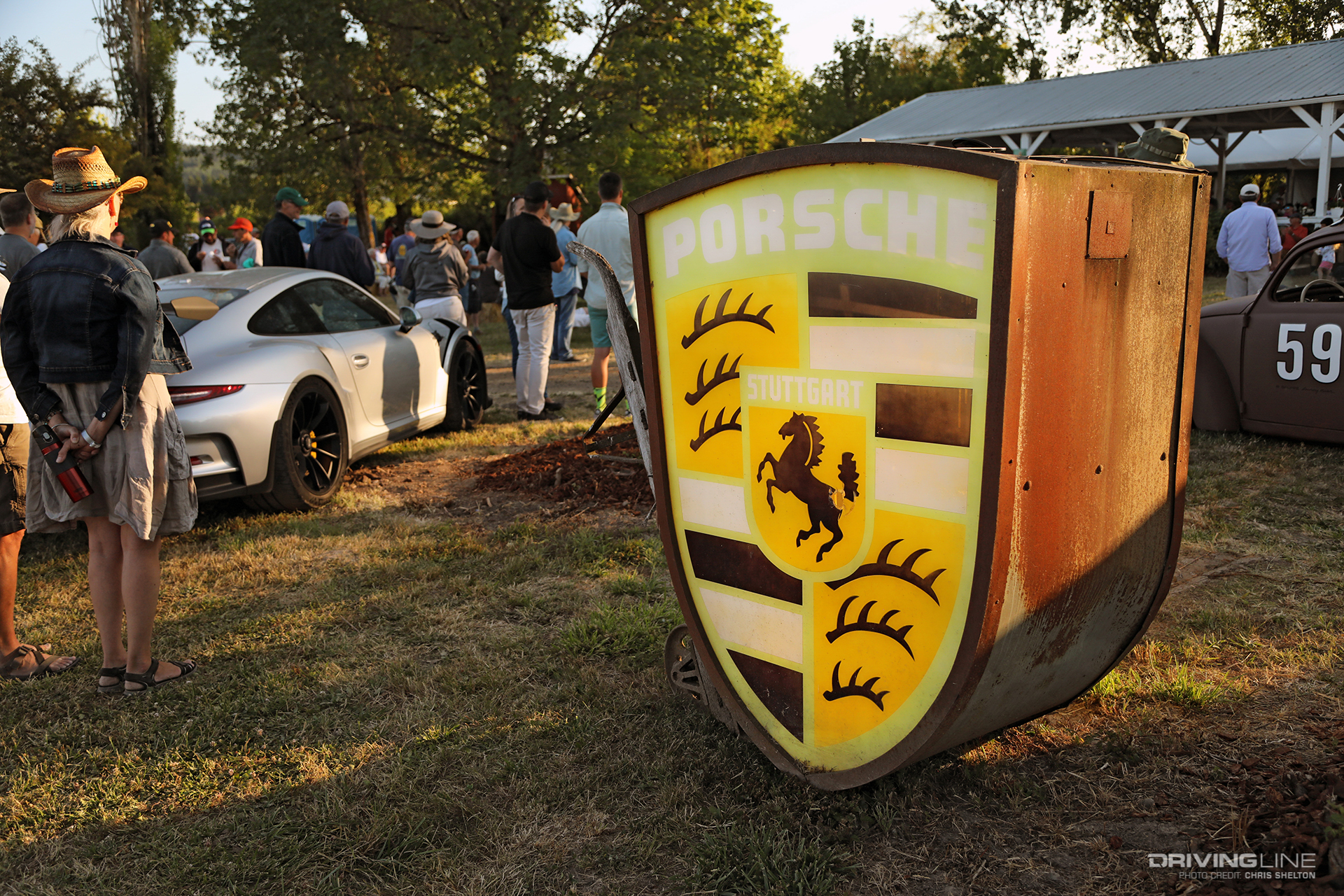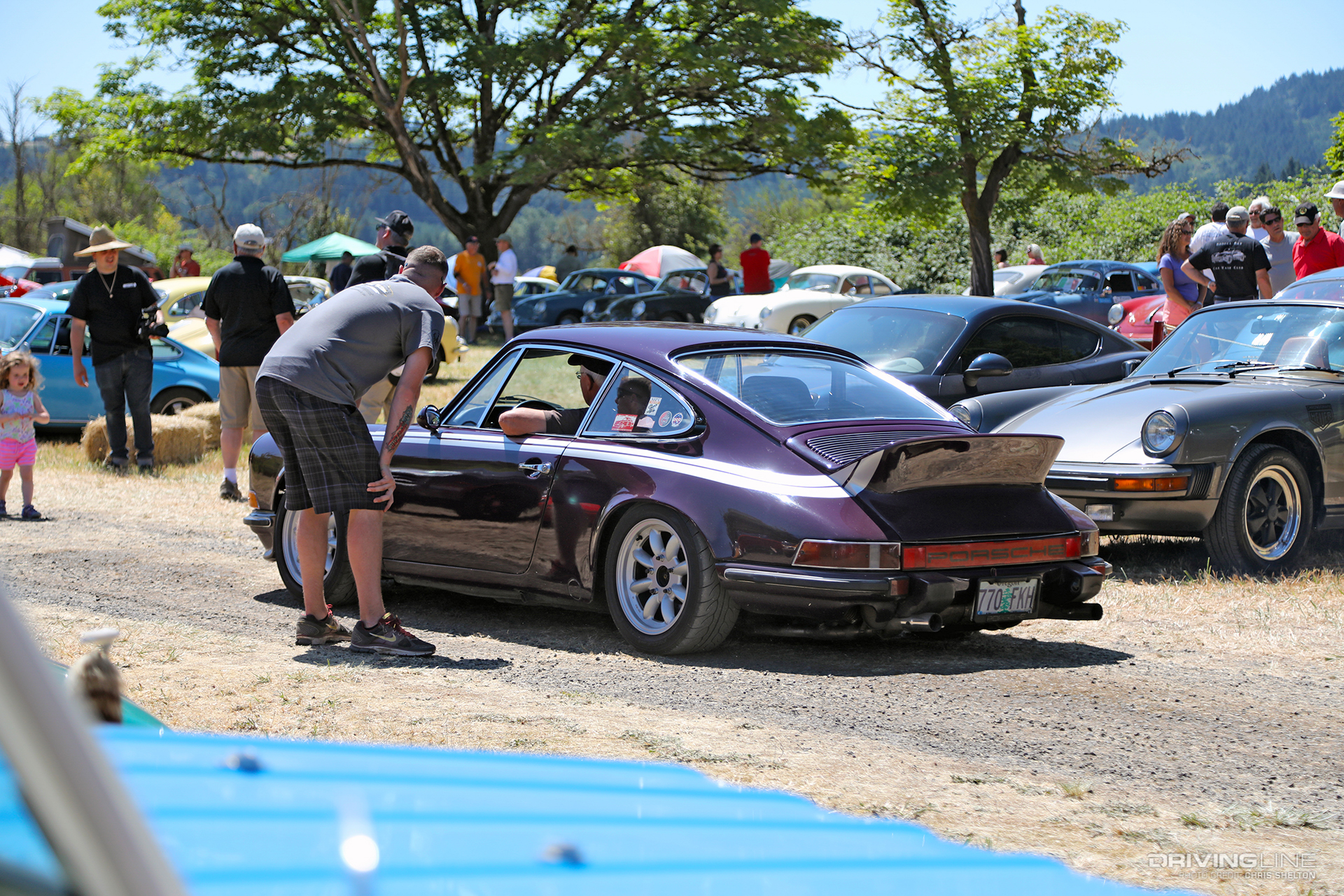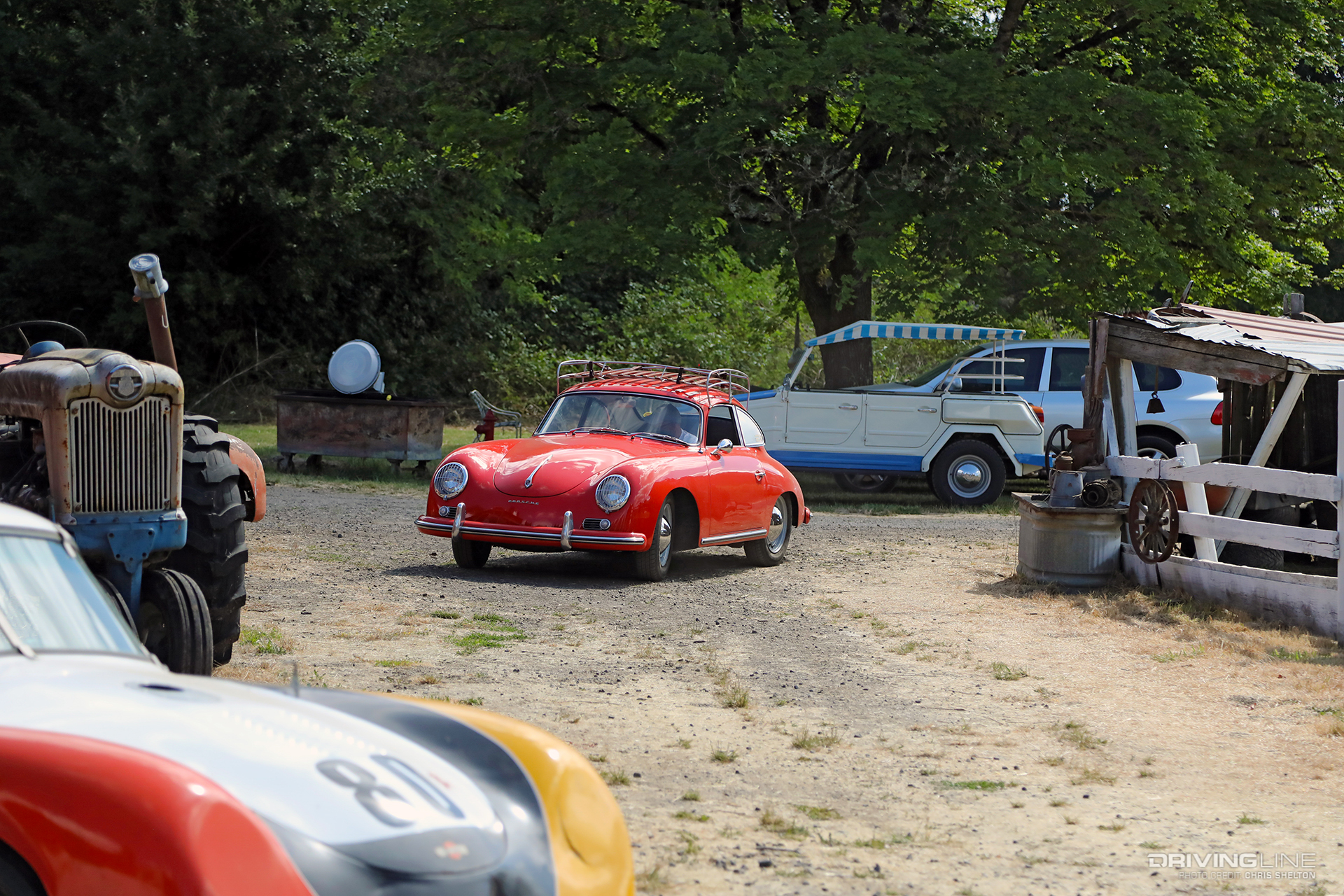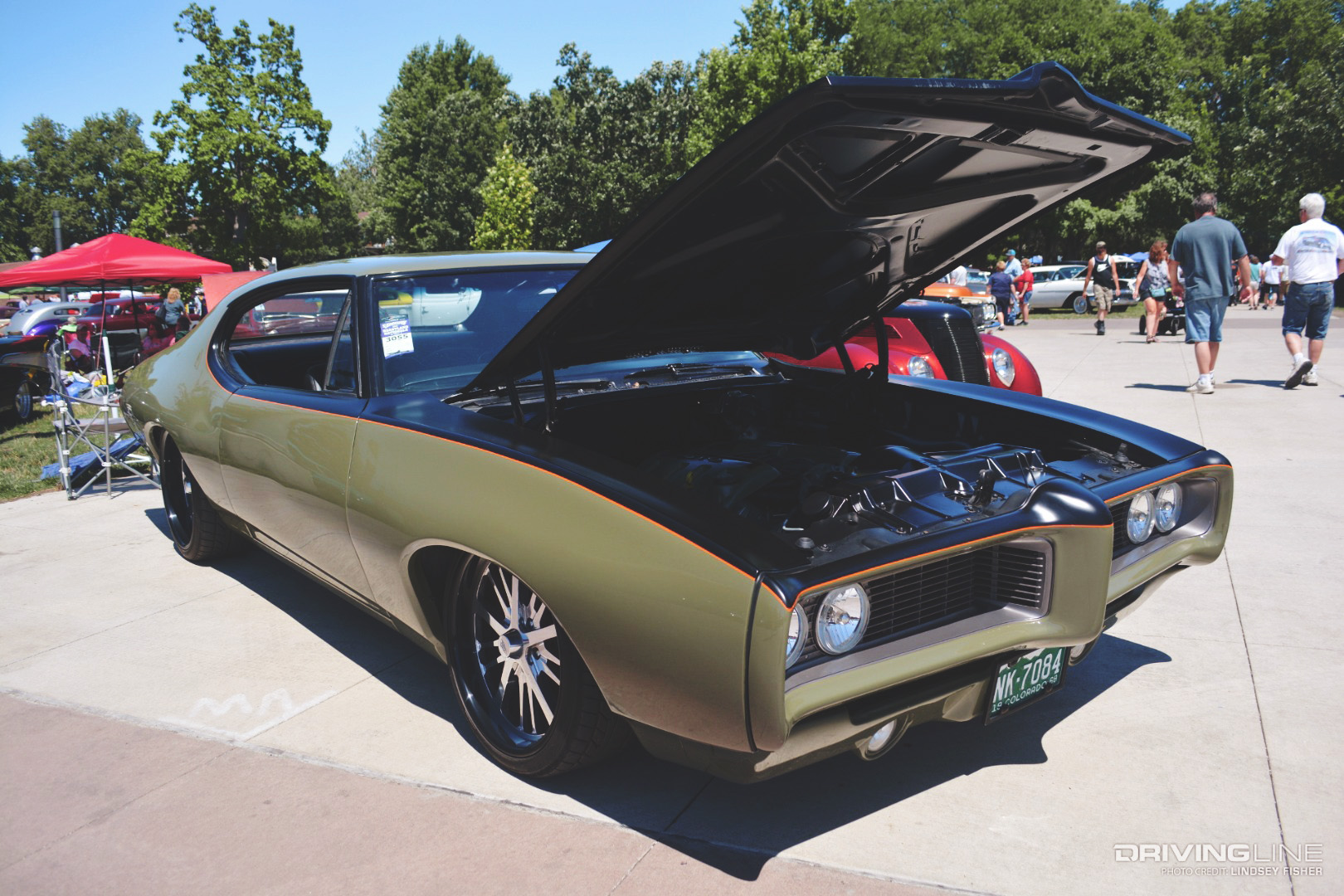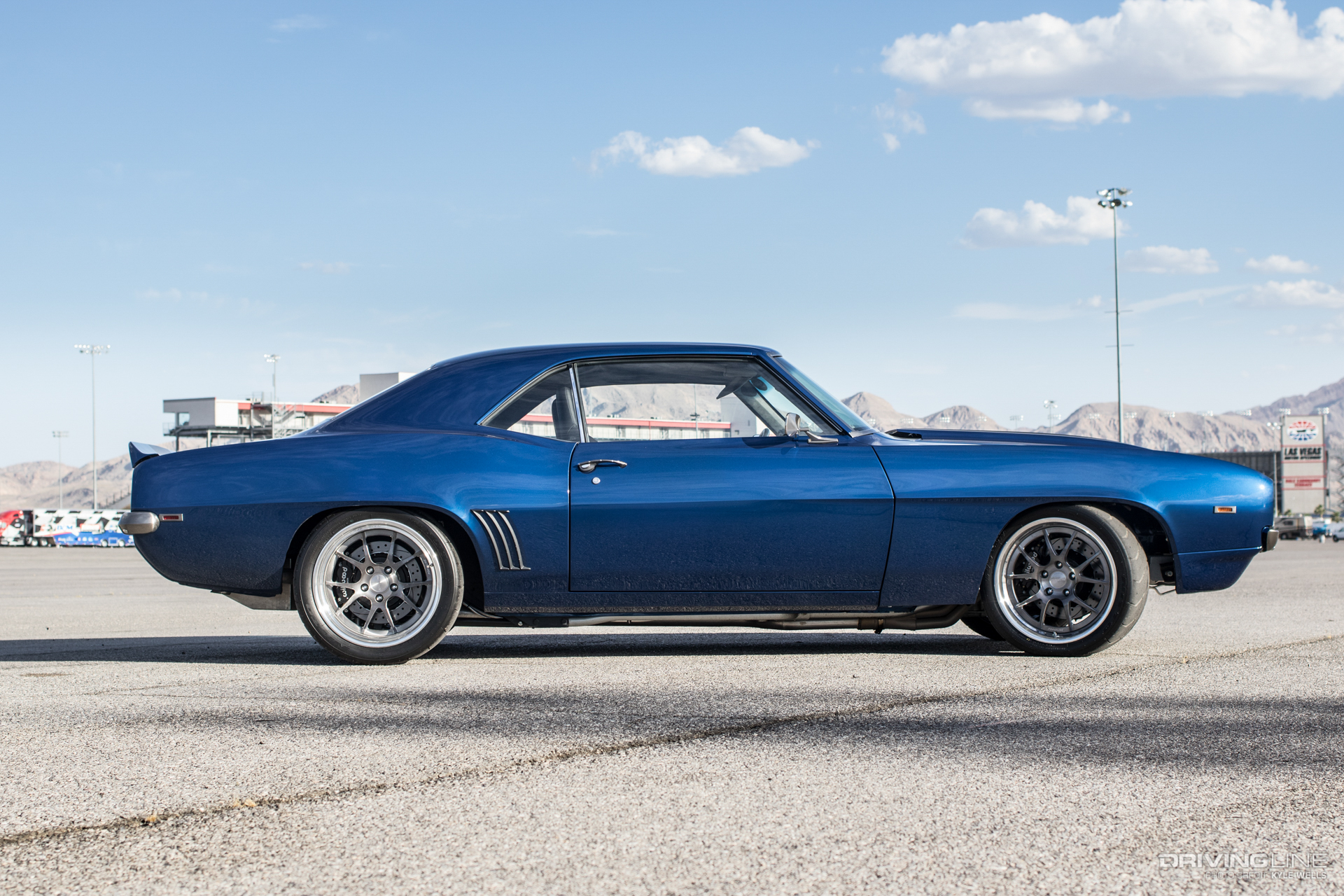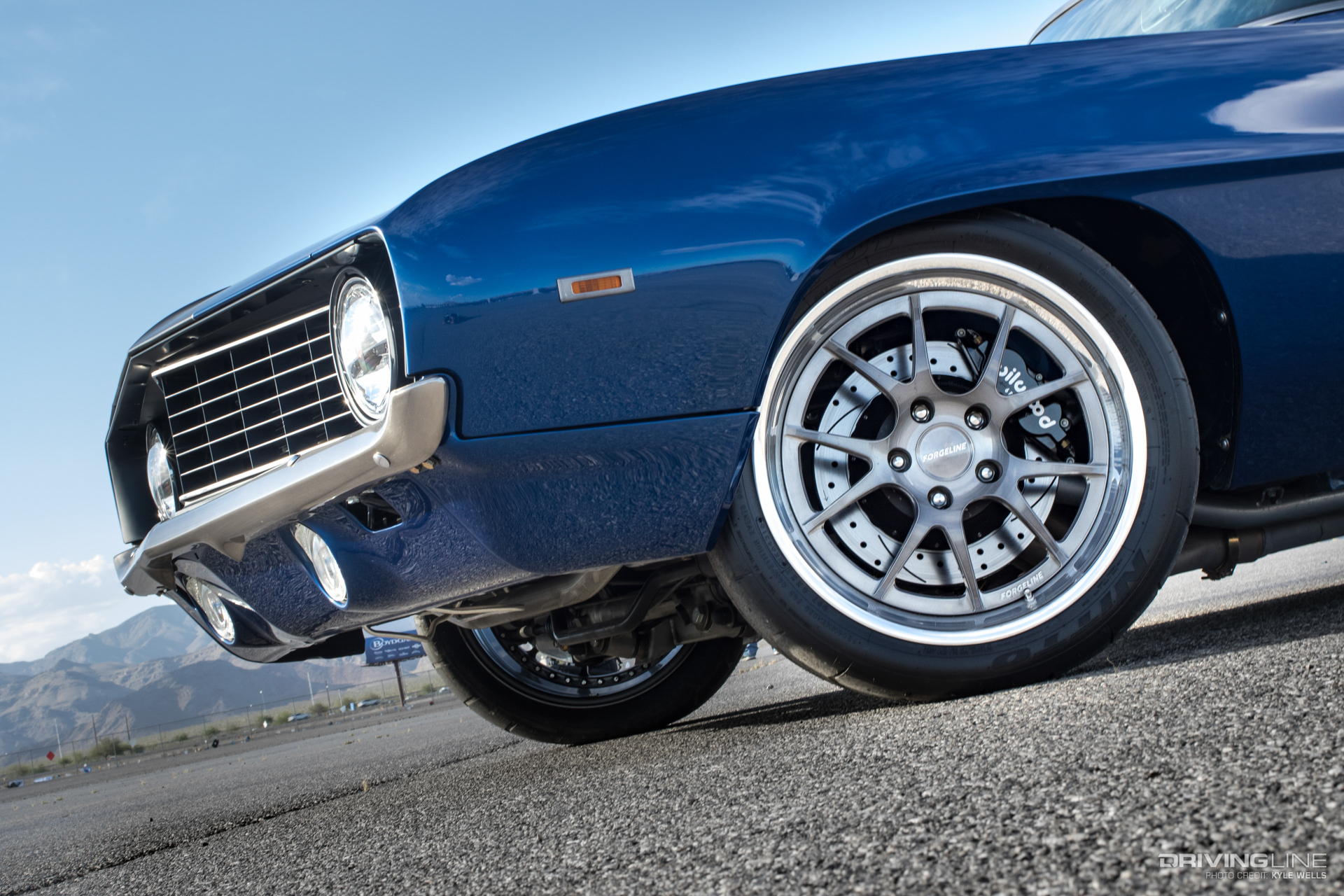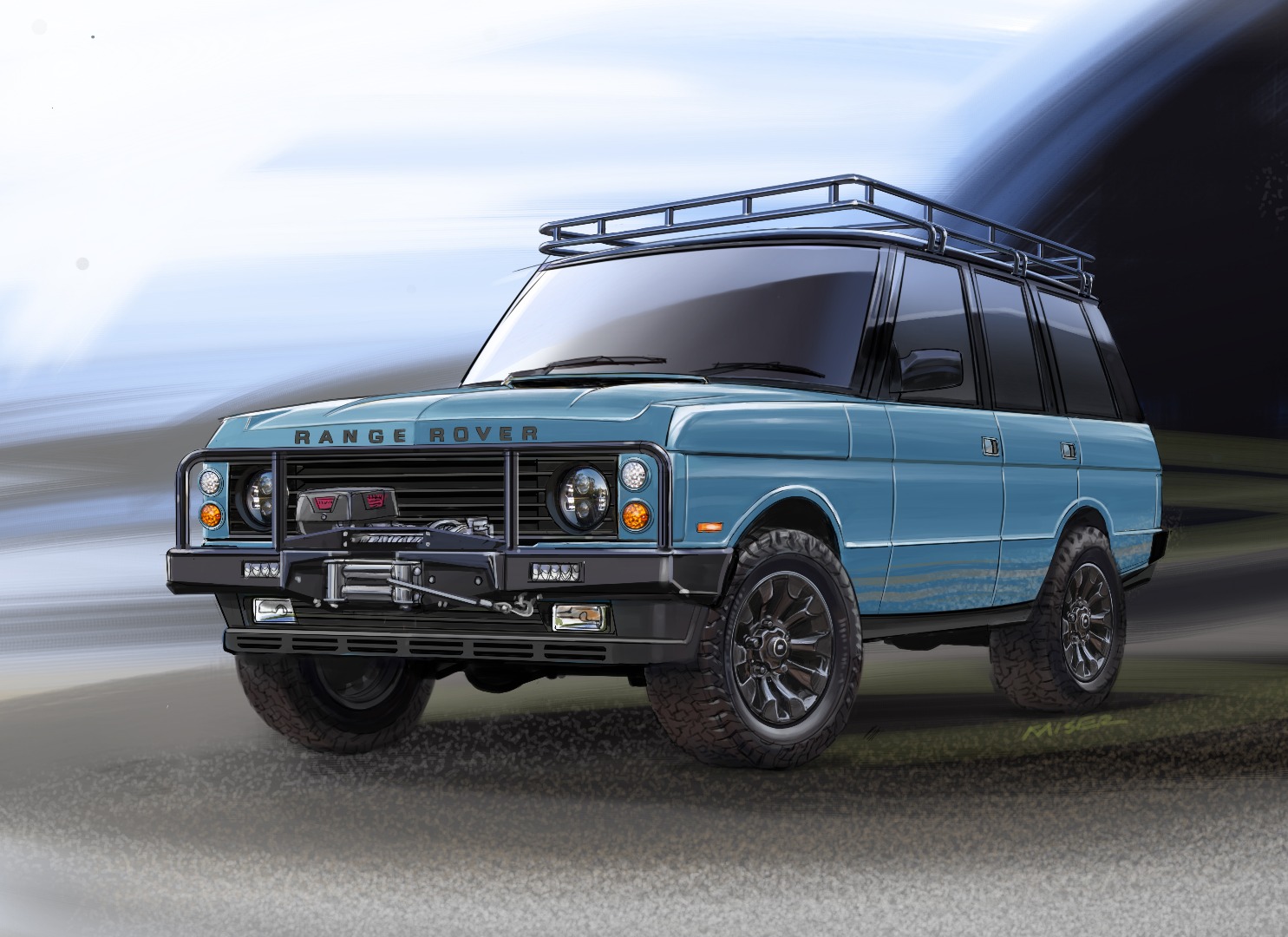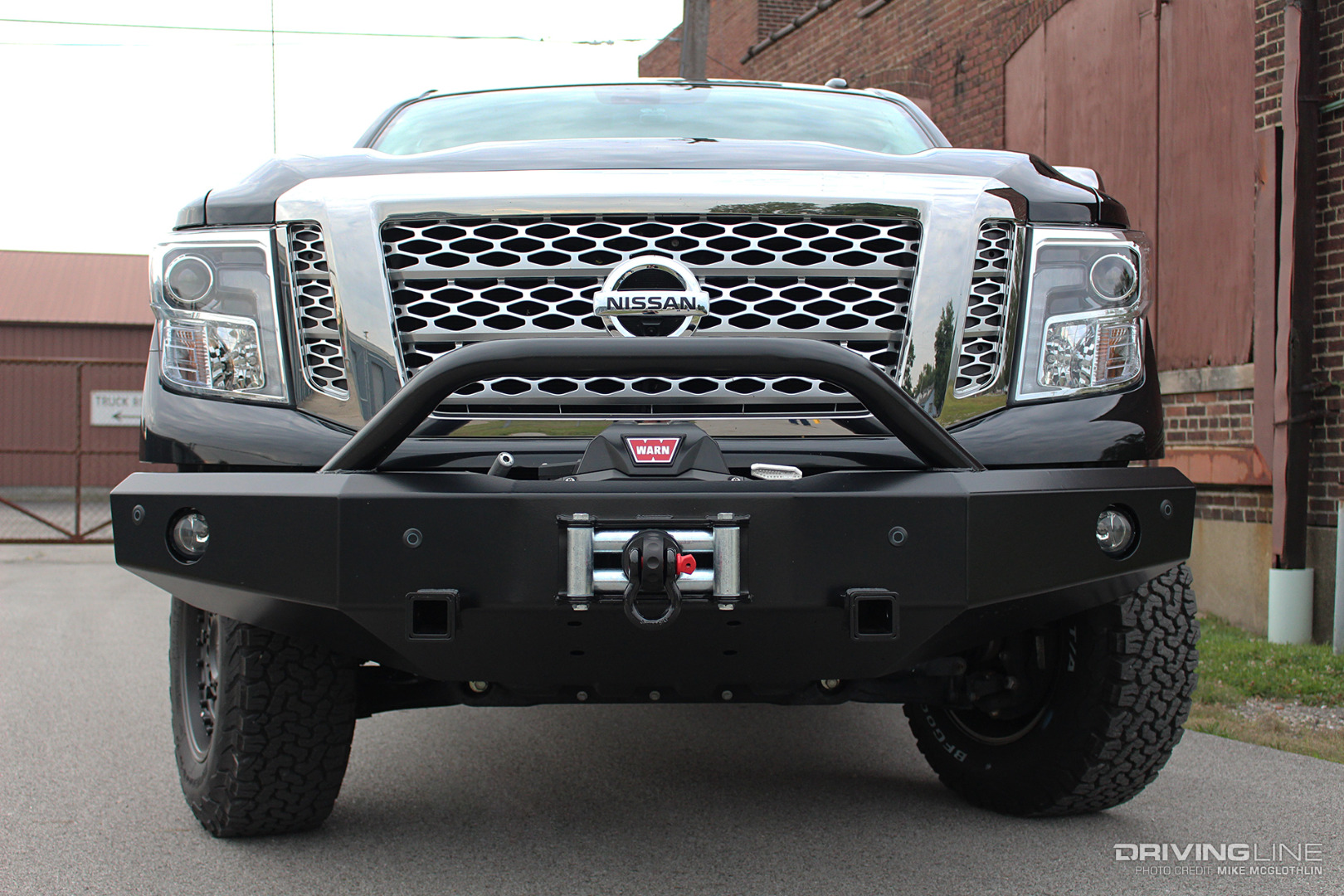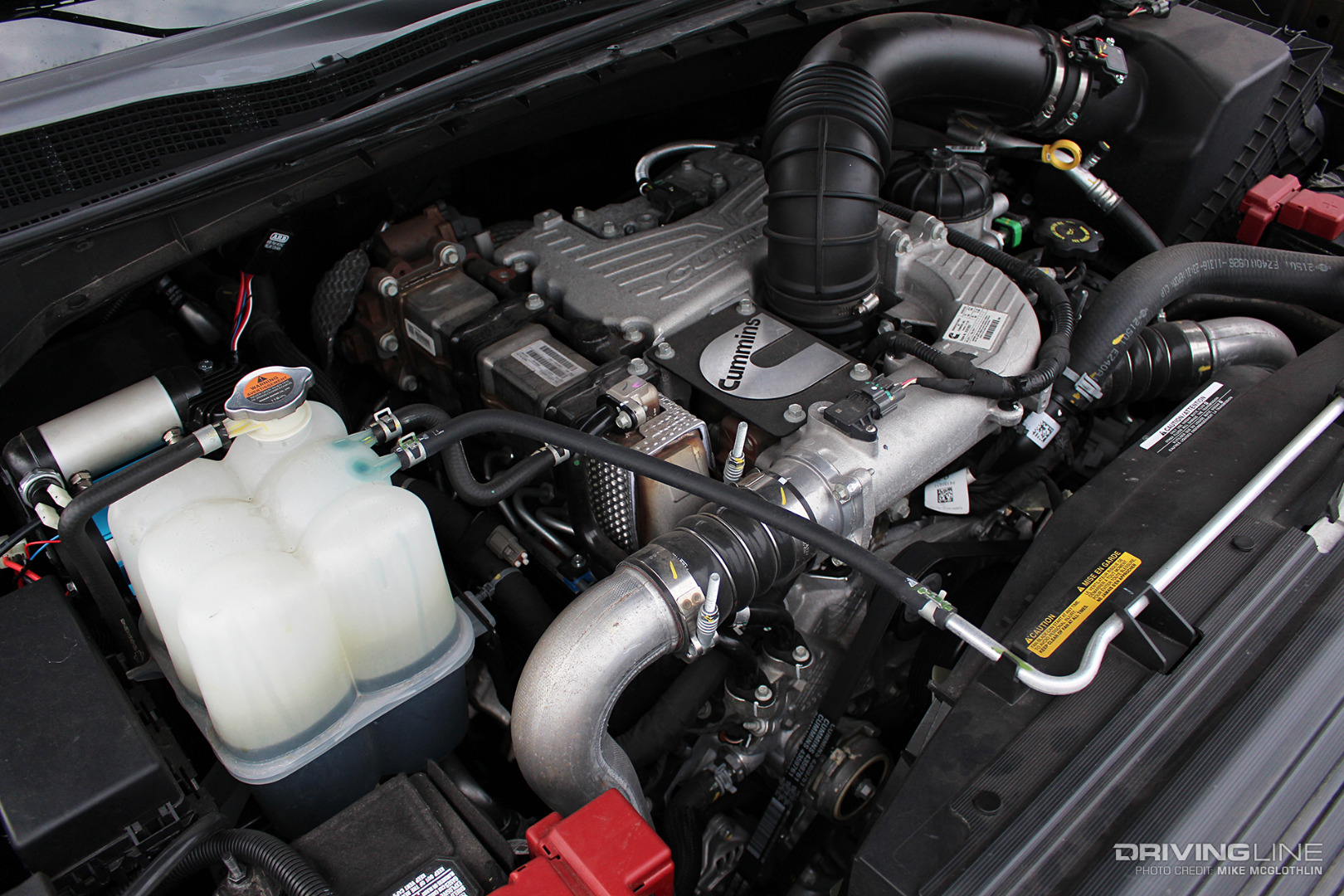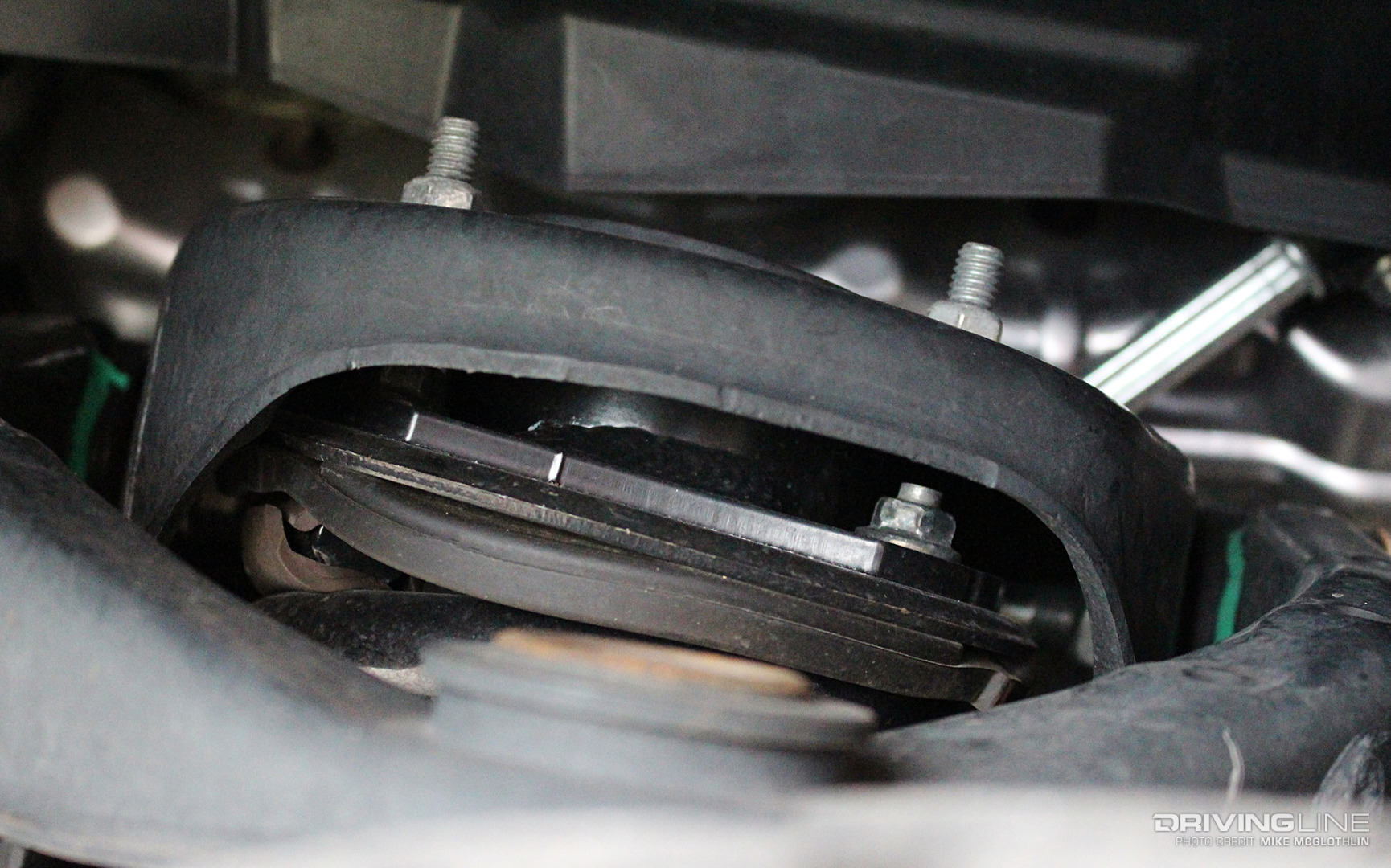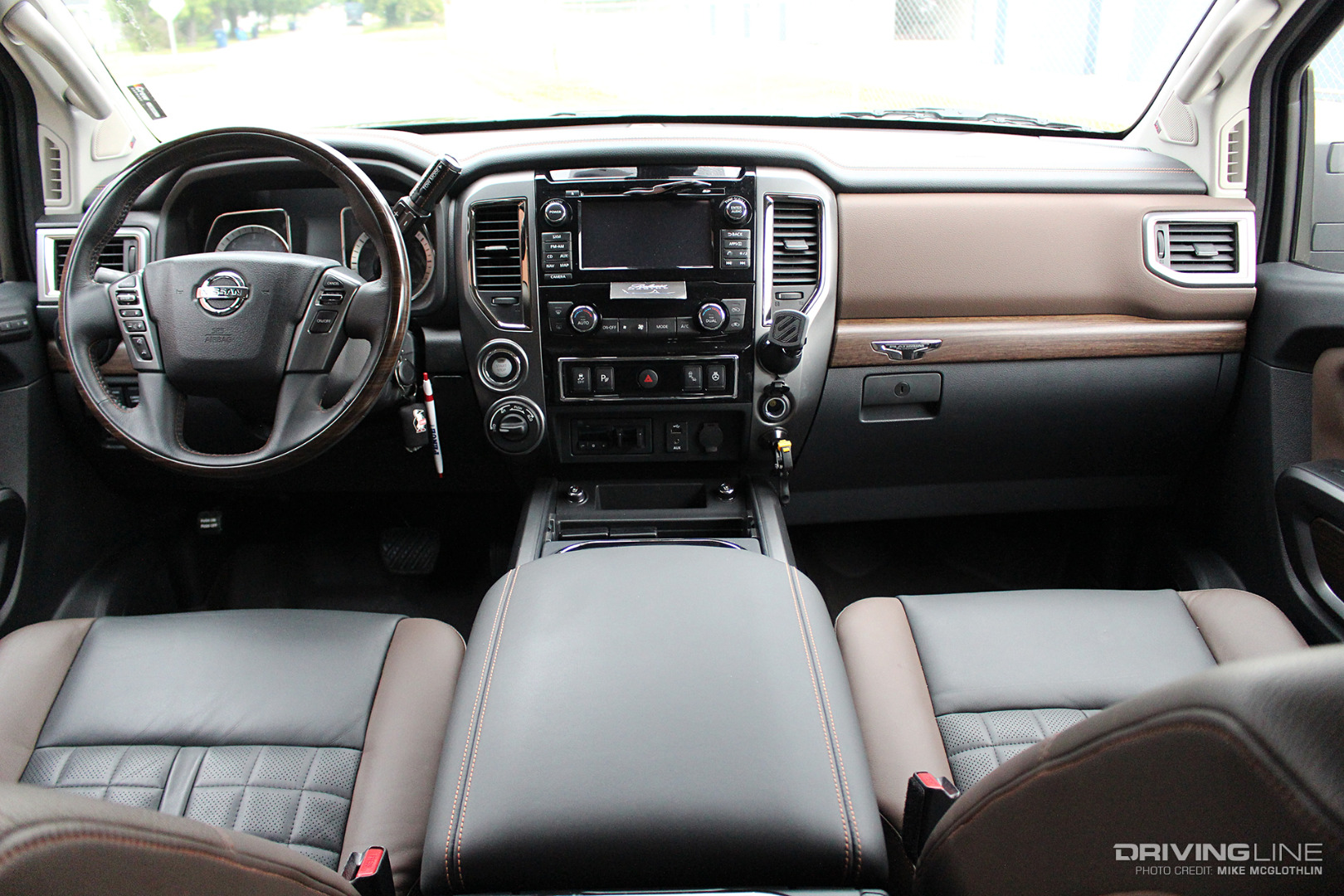Formula Drift slides into the state of Texas with heavy hearts just a week after Hurricane Harvey impacted the Houston area. This weekend’s competition is taking place around 275 miles Northwest of the Houston area at Texas Motor Speedway, a track with a 20,000-square-foot TV screen that was the largest in the world when it was debuted in 2013. Formula Drift has been competing at this track since 2014, and the stop that will establish the terms of the championship picture prior to the Irwindale season finale. Entering the event, James Deane holds a 57-point lead over Fredric Aasbo, and the championship picture could really come to clarity pending the results. An early knockout from Aasbo could allow Deane to clinch the championship here, while an early exit from Deane could make the championship a tossup between both drivers entering Irwindale.
The Texas Motor Speedway course has shifted a few times over the years, but this current layout is the same one that was utilized last season. Drivers will enter the road course in clockwise fashion, initiating on the outside of the first right-hand sweeper before moving to the inside of the course for an inside clip at the exit of the sweeper. Drivers will transition through a ‘power alley’ to an inside clip facing the crowd, before transitioning again to an outside clipping zone along a tire-lined wall in front of the judges. The course finishes with another right-hand sweeper that holds an inside clipping point at the end. Overall, the course is one of the shorter ones on the Formula Drift circuit, but also one of the fastest ones.
QUALIFYING
For the second consecutive event, seven drivers would again put up a qualifying score over 90 points, although there would be more congestion this round than in Seattle. At the top, both James Deane and Matt Coffman earned 97-point scores, the highest scores given out by the judges in qualifying this season. Deane earned the top position by virtue of a higher secondary score, while both drivers were quite happy with their scores. Odi Bakchis would slide into Q3 with a score of 95, while a trio of drivers would earn 92-point scores. Fredric Aasbo would earn the tiebreaker and Q4 position with a secondary score of 91, Ryan Tuerck would slide into Q5 with a secondary score of 90, and Piotr Wiecek slipped to Q6 due to a secondary score of 80. With 28 drivers earning a qualifying score, the top four qualified drivers would earn a bye on to the Top 16 round.
TOP 32
James Deane – Bye Run
![James Deane]()
DEANE LEAD – For the third consecutive event, James Deane has topped the qualifying charts. His 97-point qualifying run was the highest qualifying score we’ve seen all year. At this stage, each point Deane earns takes him one step closer to clinching the Formula Drift Championship. If Deane were to win the event here, he may be able to clinch the championship pending where Fredric Aasbo finishes. The two top championship contenders are on the same side of the bracket, which would setup a potential battle in the Final 4. We will see where this ends up!
Alec Hohnadell vs. Jeff Jones
HOHNADELL LEAD – Hohnadell has a very snappy initiation, but drops a tire. That will be a slight deduction for Hohnadell. Hohnadell pulls a big gap on Jones midway through the first sweeper, and extends it to around five car lengths after the first transition. Jones can’t close the gap down much at all over the length of the course. Hohnadell’s car has always been one of the faster ones on grid, but it looks like the team has a lot more grip dialed into the car this weekend than at the past few races. If he drives this strong all day, he will have some good results.
JONES LEAD – Jones has a very shaky initiation, Hohnadell is right on his tail. Jones has a smooth line around the sweeper, Hohnadell sucks in tight to Jones’ door after the first transition and stays within a single car length of proximity around the entire second half of the course! Jones doesn’t make any major mistakes, but the story of this battle is clearly Hohnadell’s incredible chase run! All three judges vote for Hohnadell to move on to the Top 16.
Kristaps Bluss vs. Alex Heilbrunn
![]()
BLUSS LEAD – Bluss has a smooth entry, Heilbrunn enters around two cars behind him, and both drivers have a smooth line through the sweeper. Bluss extends the lead to around four car lengths exiting the sweeper and powering through the power alley, Heilbrunn is able to close the gap back down to around two car lengths by the outside zone. Bluss again opens up another car length of gap around the final turn. Both drivers have a good line and steering angle, we didn’t see any major mistakes from either driver. Bluss had a better line through the outside clipping zone, but otherwise this was a pretty even run.
HEILBRUNN LEAD – Heilbrunn has a great initiation and has good line through the sweeper and the first two clipping points. Bluss is about a car length and a half behind Heilbrunn with good steering angle, but can’t close the gap down much. Both cars have tons of tire smoke and a good line near all the clips, but Heilbrunn looks to be deeper into the outside zones than Bluss was on his lead run. This was another good run from both drivers, with no distinctive or major differentiating characters. All three judges vote for a “One More Time.” This feels like the right decision as Heilbrunn had a better lead run, while Bluss had a better chase run.
One More Time
BLUSS LEAD – Bluss has a good initiation, Heilbrunn is less than a car length behind him through the first sweeper. Bluss extends the proximity to around two car lengths after the first transition and keeps the same proximity around the final two turns. Bluss goes much deeper into the outer zone in front of the judges than on his previous lead run, this is a much stronger lead run for Bluss than before.
HEILBRUNN LEAD – Heilbrunn has a bit of a feint initiation, Bluss is about two car lengths behind Heilbrunn through the first sweeper. Bluss closes the gap down to around a single car length after the transition. Heilbrunn goes deep into the outer zone in front of the judges, Bluss goes even deeper and rubs his rear bumper and trunk along the tire wall, ripping the rear bumper apart and dragging it along the final sweeper. Bluss also takes out the final inner clipping point. It’s pretty incredible that Bluss was able to drive through that tire wall rub, the wall has taken a few victims already this weekend. All three judges vote for Bluss to move on to the Top 16.
Chelsea DeNofa vs. Kyle Mohan
![]()
DENOFA LEAD – DeNofa has a smooth entry, Mohan enters around two car lengths behind him. DeNofa’s Ford Mustang RTR is really bouncing a lot through the sweeper, but the car keeps a ton of steering angle through the entirety of the turn. DeNofa hits the first inside clipping point while Mohan is way off the line, and DeNofa extends the lead to around five car lengths by the end of the power alley. DeNofa’s line is deep through the outer clipping zone in front of the judges, while Mohan cuts the course with a shallow line to try and catch up and is nowhere near where he should be. DeNofa likely has a big advantage due in part to the gap he opened up but also due to Mohan’s poor line through the course.
MOHAN LEAD – Mohan initiates and Mohan is immediately on his door. Mohan has a much better line around the sweeper on this lead run, DeNofa slides out to the wide line through the sweeper but is back on the correct line by the exit of the power alley. Mohan took out the inner clipping point at the end of the power alley, and DeNofa closed the gap down from around four car lengths at the exit of the power alley to around two car lengths across the finish line. A bit of a sloppy run from both drivers overall, but the first run seemed even sloppier from Mohan. All three judges vote for DeNofa to move on to the Top 16.
Fredric Aasbo – Bye Run
AASBO LEAD – Aasbo lost a few more championship points to Deane by qualifying fourth, but has looked consistent all weekend. His qualifying runs were scored as a 92 and a 91, showing that consistency even in qualifying. Aasbo is looking for his third win of the season, and could potentially retake the lead from Deane if he can win the event pending where Deane finishes.
Justin Pawlak vs. Nate Hamilton
PAWLAK LEAD – Pawlak with a feint entry, Hamilton is tight to Pawlak through the first portion fo the sweeper but loses some ground midway through the turn. Pawlak has substantially more angle and extends the lead through the power alley, Hamilton uses a much shallower line to cloe the gap a bit through the outside zone in front of the judges. Pawlak laid down the qualifying-like lead run that you would expect from a lead car, Hamilton was clearly struggling to keep up with Pawlak’s Ford Mustang through the course.
HAMILTON LEAD – Hamilton has a slow entry, Pawlak quickly closes down the gap to around a half car length. Hamilton’s car is clearly slow and struggling with angle through the sweeper, Pawlak does a good job controlling the distance to avoid colliding with Hamilton. Hamilton isn’t able to open up much proximity through the power alley, but adds a decent amount of angle at the inside clipping point at the end of the power alley. Pawlak maintains consistent proximity and steering angle behind Hamilton, this was a good chase run from Pawlak. One judge votes for a “One More Time,” but the other two judges side with Pawlak. We will see Pawlak in the Top 16.
Ryan Tuerck vs. Faruk Kugay
TUERCK LEAD – Tuerck initiates and immediately opens the gap up to around two car lengths, then extends the proximity to around five car lengths through the power alley. Kugay is struggling to keep him, and is car looks very unsettled while in drift. Kugay is off several of the clipping points, while Tuerck has a very good pass with tons of tire smoke. This will be a very big advantage for Tuerck going into the second run.
KUGAY LEAD – After a restart due to jumping the light, Kugay has a shaky initiation into the first turn and fairly shallow steering angle. Tuerck is around two car lengths behind Kugay at the start of the sweeper but closes the gap down to a single car length by midway through the sweeper. Exiting the first sweeper, Kugay stops drifting and grips the rest of the track. Tuerck stays in the throttle and finishes the course in full drift behind Kugay, this will make the decision much easier for the judges. All three judges vote for Tuerck to move on to the Top 16.
Ken Gushi vs. Juha Rintanen
GUSHI LEAD – Gushi with a very snappy initiation, Rintanen starts around two car lengths behind Gushi through the sweeper but loses ground through the power alley. Gushi has a great line around the course and extends the lead to around five car lengths by the time they get to the end of the power alley, while Rintanen finishes the course with a good line but with a notable disadvantage heading into the second run due to the lack of proximity.
RINTANEN LEAD – Rintanen initiates and has a two-car gap, Gushi closes it down to a single car length exiting the sweeper. Rintanen opens the gap back up to around two car lengths through the power alley but goes too deep into the outside zone in front of the judges and crashes hard into the tires. Rintanen’s car spun around one and a half times in front of Gushi. Thankfully, Gushi is able to avoid Rintanen’s spinning car, and Rintanen comes out of the car unhurt. All three judges vote for Gushi to move on to the Top 16.
Matt Coffman – Bye Run
![]()
COFFMAN LEAD – Coffman is a rising star in the sport, and this is his best qualifying effort of the season. Even more impressive is the 97-point score he earned, the best of his career. Coffman had a perfect “style” score, with the only deductions coming from the “angle” and “line” judges. Coffman has shown that it doesn’t take a new, flashy chassis every year to turn out results, and his comfort in this Nissan S13 chassis is clearly growing with every pass he makes.
Vaughn Gittin Jr. vs. Pat Goodin
![]()
GITTIN JR. LEAD – Goodin actually initiates before Gittin Jr., but Gittin Jr. quickly opens up the gap to around two car lengths by midway through the sweeper. Gittin Jr. is much tighter to all the inner clipping points, while Goodin is taking a shallower line to try and close the gap to Gittin Jr. but unable to make up much ground. Gittin Jr. crosses the finish line with around a three-car-length gap while Goodin takes out the final clipping point.
GOODIN LEAD – Goodin has a better line on his lead run, but is still not as close to the inner clipping points as he should be. Gittin Jr. stays around two car lengths behind Goodin, he isn’t able to close the gap down much but he has much better line than Goodin. No major mistakes from either driver, but Goodin is clearly further from nearly every clipping point and outside zone than he should be. All three judges vote for Gittin Jr. to move on to the Top 16.
Michael Essa vs. Cameron Moore
ESSA LEAD – Essa has a good initiation and around a two-car-length lead ahead of Moore, but extends the lead to around five car lengths by the end of the power alley. Moore may have briefly lost drift after the transition out of the first sweeper, but the lack of proximity will be a bigger deduction. Essa finishes the run with around an eight-car-length gap ahead of Moore as they cross the finish line.
MOORE LEAD – Moore has a good run in his lead with no major mistakes, but Essa is never more than two car lengths behind him. Essa takes out the inner clipping point at the end of the power alley, but has a good chase run overall with consistent proximity. All three judges vote for Essa to move on to the Top 16.
Chris Forsberg vs. Robbie Nishida
FORSBERG LEAD – Forsberg has a great initiation, Nishida is a bit later on initiation and a bit slower to get his car to full angle. Forsberg exits the first sweeper with a two-car lead on Nishida, but extends that gap to around five cars by the end of the power alley. Nishida’s car is clearly lacking steering angle and sped, and finishes around four car lengths behind Forsberg. This was a good effort from Nishida to earn qualifying points, but this car is clearly underequipped to compete against the reigning Formula Drift champion.
NISHIDA LEAD – Nishida is in a borrowed car this weekend as his GTR wasn’t ready for competition. Nishida starts with a relatively conservative entry, Forsberg is around a single car length behind Nishida. Forsberg keeps consistent proximity through the course, staying in the pocket close enough to Nishida to avoid being blinded by the tire smoke. All three judges vote for Forsberg to move on to the Top 16.
Odi Bakchis – Bye Run
![]()
BAKCHIS LEAD – Bakchis is quietly having one of his best seasons to date. With a 95-point qualifying score, Bakchis can clearly lay down a lead run with the best of them. While fans want to see the drivers take their bye runs, the DQ from Wiecek in Montreal is a perfect example of why drivers voted to skip their runs moving forward.
Matt Field vs. Jhonnattan Castro
FIELD LEAD – Big steering angle from Field on initiation, Castro stays around a single car length behind Field through the sweeper. Field is a bit off the inside clip at the end of the sweeper, but with notably more steering angle. Field briefly opens the gap up to around three car lengths, but Castro closes it down to around two car lengths by the finish line. A good run from both drivers, some small mistakes from each driver but nothing catastrophic. This is probably an even score going into the second run.
CASTRO LEAD – Castro initiates on a wider line, Field is around a single car length behind Castro through the sweeper. Castro extends the gap to around three car lengths through the power alley, Field isn’t able to close down the gap much until he takes a shallower line through the outside zone in front of the judges. This is a tough pair of runs to judge. One judge votes for a “One More Time,” the other two judges vote for Field to move on to the Top 16.
Piotr Wiecek vs. Dan Burkett
![]()
WIECEK LEAD – Both of these cars are powered by 2JZ engines, but Burkett’s car came with that engine from the factory. Wiecek has a very snappy initiation, then quickly extends the gap to around three car lengths. Wiecek has tons of steering angle, while Burkett’s car looks to be struggling with steering angle. Wiecek really opens up the gap to around six car lengths through the power alley and keeps the gap large across the finish line. This will be a pretty big advantage for Wiecek going into the second run.
BURKETT LEAD – Burkett has a good initiation, Wiecek is around a car length behind Burkett through the sweeper. Burkett has a much better run here with more steering angle, but isn’t able to open up much of a gap on Wiecek. This is a good, consistent chase run from Wiecek. All three judges vote for Wiecek to move on to the Top 16.
Dai Yoshihara vs. Dean Kearney
YOSHIHARA LEAD – Yoshihara with a good initiation, Kearney is just a single car length behind Yoshihara through the sweeper. Yoshihara is throwing off tons of tire smoke through the power alley, it’s nearly impossible to see Kearney’s car behind Yoshihara. As Yoshihara transitions through the power alley, Kearney emerges off the drifting line and goes wide into the tire wall. Kearney loses his rear bumper, but is able to finish the run around six car lengths behind Yoshihara. Great lead run from Yoshihara, likely a disadvantage for Kearney.
KEARNEY LEAD – Kearney calls his competition timeout to look over the damage and make repairs after the collision with the tire wall. Kearney is able to repair his vehicle and is back to finish the battle. Kearney has a good initiation, Yoshihara is about a single car length behind him through almost the entire course. Kearney took out the inside clipping point at the end of the power alley and isn’t as deep through the outside zone as the judges would like to see, but has a clean run otherwise. All three judges vote for Yoshihara to move on to the Top 16.
FORD TOP 16
Twelve young men and women are sworn into the Air Force in front of the crowd to kick off the Top 16 ceremonies. The Dyess Air Force Base Color Guard presented the colors, while one of their fellow Airwomen sang the National Anthem. During introductions, James Deane was handed a “Bag o’ Cash” from Black Magic as the top qualifier, but he notified the staff that he wanted to donate the cash back to a Hurricane relief effort instead of taking home the $500 cash. We see the typical burnouts from the Top 16 introductions, and the drivers grid up for the tandem battles.
Deane vs. Hohnadell
DEANE LEAD – Deane initiates smoothly, Hohnadell tries to throw the car in with heavy angle, but appears to over-rotate and lose momentum shortly after initiation and coasts the rest of the course. Deane makes a full pass with tons of smoke, but it won’t matter much as Hohnadell will be scored with an incomplete pass. Hohnadell was having issues with his shifter popping out of gear earlier in the weekend, this may be a mechanical failure rather than a mental error from Hohnadell.
HOHNADELL LEAD – Hohnadell calls a competition timeout, turns out he has a broken differential. Deane makes a bye run pass to prove his car is functioning, Hohnadell’s day will end early. Deane will earn the unanimous win and move on to the Great 8.
Bluss vs. DeNofa
![]()
BLUSS LEAD – Both drivers initiate simultaneously, DeNofa is just inches from Bluss’ door for the first half of the sweeper. Bluss is able to pull a small one car gap by the end of the sweeper due to shallow steering angle from DeNofa, but wow that was an exciting start to the run! DeNofa keeps consistent proximity through the power alley, and stays hot on Bluss’ door through the outside zone in front of the judges and the final sweeper. Looking at the replay, there might have been some contact between DeNofa and Bluss shortly after initiation, but Bluss drove through it and wasn’t affected. DeNofa also took out the inner clipping point at the exit of the power alley, but the incredible proximity will probably permit the judges to ignore that as a deduction.
DENOFA LEAD – DeNofa has a big initiation, Bluss is a bit later on his initiation but isn’t as tight on DeNofa’s door as we saw in the previous run. Bluss has shallow angle exiting the sweeper, and uses shallow steering angle after the power alley to stay close to DeNofa. DeNofa has a fantastic line on his lead run, and will likely be rewarded for sticking to the qualifying criteria. One judge votes for a “One More Time,” but two judges vote for DeNofa to move on. DeNofa will make it to the Great 8.
Aasbo vs. Pawlak
AASBO LEAD – Aasbo initiates smoothly, Pawlak initiates a few moments later and slides around a car length behind Aasbo. Aasbo has a good line through the sweeper, Pawlak remains a single car length behind Aasbo with nearly identical steering angle. Aasbo opens up the gap to around three car lengths through the power alley, Pawlak closes the gap back down to a single car length in the outside clipping zone in front of the judges and stays close to Aasbo around the final turn. Pawlak had to add a bunch of angle to prevent from making contact with Aasbo in that outside zone, a great adjustment by Pawlak!
PAWLAK LEAD – Pawlak has a very similar initiation to Aasbo’s lead run, but Aasbo is slower to get his car to angle. Aasbo’s Toyota Corolla iM has noticeably less steering angle through the big sweeper, but stays around a car length and a half behind Pawlak. Pawlak dumps big angle both exiting the power alley and through the outside clipping zone in front of the judges. This is a very stylish run from Pawlak! All three judges vote for a “One More Time,” we’ll see these two tandem again!
One More Time
AASBO LEAD – Aasbo again initiates much earlier than Pawlak, Pawlak has a bit shallower steering angle in chase than we saw in the previous run. Aasbo extends the lead from one car length to around three car lengths in the power alley, but Pawlak again closes the gap through the outer clipping zone in front of the judges and stays much closer around the second half of the course.
PAWLAK LEAD – Pawlak again initiates with much more angle than Aasbo, Aasbo appears to be sacrificing steering angle to stay close to Pawlak. Pawlak has noticeably more angle and is much more committed to the run than Aasbo, Aasbo has several steering corrections both through the sweeper and through the outside clipping zone in front of the judges. All three judges vote for Aasbo to get the win. Aasbo’s championship hopes continue on to the Great 8!
Tuerck vs. Gushi
![]()
TUERCK LEAD – Tuerck initiates first, Gushi initiates a bit later but tucks in nicely behind Tuerck through the first sweeper. Tuerck leads Gushi out of the sweeper with a single car length of proximity between the two, Gushi narrowly nudges the Black Magic clipping point at the end of the sweeper out of the way with his front bumper. Tuerck adds some big angle exiting the power alley and opens up the gap to around two car lengths, Gushi appears to slow his car a bit to stay out of the smoke screen coming from Tuerck. Both cars finish strong, this is a pretty even battle between two very similar Toyota GT86s.
GUSHI LEAD – Gushi has a snappy initiation and quickly opens up the lead to around two car lengths entering the sweeper, then emerges from the sweeper with around a three car length lead. Tuerck is a bit shakier with his steering angle through the sweeper. Gushi has a much cleaner line on this run, Tuerck doesn’t close the gap much around the later half of the course as both cars cross the finish line with around three car lengths between them. One judge votes for Gushi, two judges vote to see this tandem go “One More Time.” We’ll see these two battle again!
One More Time
TUERCK LEAD – Similar initiation from both drivers, Tuerck extends the lead from around a single car length to three car lengths through the power alley, Gushi sacrifices both his angle and line near the outside zone in front of the judges to try and close the gap back on Tuerck. Gushi takes out the final inside clipping point before crossing the finish line.
GUSHI LEAD – Gushi has a much more stylish lead run than his chase run, with tons of steering angle and tire smoke around the course. Gushi has around four car lengths of lead ahead of Tuerck exiting the power alley, but Tuerck sacrifices his line through the outside clipping zone to close the gap a bit. These runs again look very similar, it will be tough for the judges to find a differentiating factor. One judge votes for a “One More Time,” the other two judges vote for Gushi to move on to the Great 8.
Coffman vs. Gittin Jr.
COFFMAN LEAD – Unfortunately, Coffman appears to have blown his motor earlier today and won’t be able to make the call against Gittin Jr. We still see Gittin Jr. make a solo pass to burn off a set of Nitto Tires, all three judges vote for Gittin Jr. to move on to the Great 8.
Essa vs. Forsberg
![]()
ESSA LEAD – Essa has a snappy initiation, Forsberg tucks in around two car lengths behind him. Essa extends the lead to around four car lengths through the power alley, Forsberg briefly closes it to around two car lengths before the outside clipping zone but Essa extends the lead again around the final turn. Essa looks to have his BMW dialed in, this is one of this better runs we’ve seen from him all weekend!
FORSBERG LEAD – Forsberg with a snappy initiation similar to Essa, Essa is much closer to Forsberg through the sweeper and doesn’t lose any ground through the power alley. Essa is off the line a bit behind Forsberg and his rear end taps the tire wall, spinning him around nearly two full times. Forsberg finishes the run cleanly. Essa gets out and waives to the crowd to indicate he’s ok, he then is able to drive his car back to the pits which is a great testament to the safety imposed by Formula Drift. All three judges vote for Forsberg to move on to the Great 8. We’re glad to see that Essa is OK, and the damage to his car is likely more cosmetic than anything else.
Bakchis vs. Castro
BAKCHIS LEAD – Bakchis has a snappy initiation, Castro is a bit slower to get to angle but sticks to Bakchis’s door through the sweeper. Bakchis has more steering angle, but Castro keeps a consistent single car of proximity between him and Bakchis. Bakchis briefly opens up the gap to around two car lengths, Bakchis briefly brushes the tire wall but stays on course and finishes the final turn smoothly. We see a ton of brake lights from Bakchis around the final turn, Castro adjusts nicely to avoid hitting Bakchis but takes out the final clipping point.
CASTRO LEAD – Castro has a good initiation, Bakchis stays around a car length behind Castro through the sweeper with much more steering angle than we saw from Castro in his chase run. Castro briefly opened the gap up to around two car lengths through the power alley, but Bakchis closed it down again through the outside clipping zone. All three judges vote for Bakchis to move into the Great 8.
Wiecek vs. Yoshihara
WIECEK LEAD – Wiecek has a good initiation and tons of angle, Yoshihara is only a single car length behind Wiecek. Wiecek takes a bit of a wider line through the sweeper than the judges would like to see, but otherwise a great run from him. Wiecek has a bit more angle exiting the power alley, but overall, no major mistakes from either driver.
YOSHIHARA LEAD – Both drivers intiate simultaneously, Wiecek surges ahead midway through the sweeper and may have made contact with Yoshihara. Wiecek backs off briefly and Yoshihara opens up the gap to around four car lengths, Wiecek closes the gap after the power alley and follows Yoshihara within inches around the final sweeper. One judge votes for Wiecek, the other two judges vote for Yoshihara to move on to the Great 8. This battle could have easily gone either way!
NOS ENERGY DRINK GREAT 8
Deane vs. DeNofa
DEANE LEAD – Deane initiates with DeNofa hot on his tail, DeNofa’s car is sending sparks from the differential from the car bouncing on the pavement. DeNofa is just inches from Deane midway through the sweeper, Deane adds some big steering angle which extends the proximity just enough to give Deane room to transition exiting the sweeper without making contact with DeNofa. Deane has the proper line through the outside zone in front of the crowd, DeNofa is very shallow through the outside zone with sparks flying from the rear of his car midway through the turn. Both cars finish the run smoothly, there’s speculation that DeNofa might have debeaded a tire but he’s able to make it to the line just fine for his second run.
DENOFA LEAD – DeNofa initiates with tons of angle, Deane stays hot on DeNofa’s tail through the sweeper and mirrors DeNofa’s angle almost perfectly. DeNofa drops a tire briefly exiting the sweeper, briefly opens up a small gap on Deane, then dumps a ton of angle exiting the power alley in front of the fans. Deane does a great job to adjust and avoid making contact with DeNofa, who lost a fair amount of speed when he added the steering angle. Deane had a fairly shallow line through the outside clipping zone and around the final turn, but might have been thrown off by DeNofa’s angle and lack of speed. One judge votes for a “One More Time,” but the other two vote for Deane to move on. This run easily could have gone to a “One More Time” run!
Aasbo vs. Gushi
AASBO LEAD – Aasbo has a smooth initiation, Gushi is just a car length behind him through the sweeper. Aasbo has a few brake taps through the sweeper to adjust the car, but Gushi stays consistently a single car length behind him. Both drivers transition into the power alley synchronously, then transition back in front of the fans again in mirror tandem. Great run from both drivers!
GUSHI LEAD – Gushi has a much smother initiation and holds much more steering angle through the sweeper, Aasbo again has to tap his brakes a few times to adjust his angle. Gushi enters the power alley with around two car lengths of gap, Aasbo closes it down again near the outside zone by taking a shallower line. One judge votes for Aasbo, one judge votes for Gushi, and one judge votes for a “One More Time.” It seems like each judge saw slightly different mistakes from these drivers; we aren’t mad at watching these two battle again!
One More Time
AASBO LEAD – Aasbo has a much cleaner run through the sweeper on this run, Gushi stays just a single car length behind Aasbo through the entire sweeper. Aasbo extends the gap through the power alley and throws up a ton of smoke, Gushi appears to get lost a bit and slides a bit wide through the power alley. Aasbo extends the lead to around four car lengths through the outside clipping zone, Gushi takes a shallower line through the outside zone to close the gap but will likely be at a slight disadvantage due to his wider line through the power alley.
GUSHI LEAD – Gushi with a stylish entry, Aasbo stays just a single car length behind him through the sweeper. Gushi has shallow steering angle through the power alley, Aasbo surges ahead and closes the gap down to Gushi and stays within a single car length of Gushi through the final two turns. Aasbo is a bit shallow on the line through the outside zone, but stays close enough to Gushi to not earn too big of a deduction. All three judges vote for Aasbo to move into the Final 4; this will guarantee that the championship will not be clinched tonight in Texas.
Forsberg vs. Gittin Jr.
![]()
FORSBERG LEAD – Forsberg has a feint entry and appears to have dropped a tire shortly after initiation, Gittin Jr. initiates shortly behind him and we again see sparks fly from underneath a Ford Mustang RTR. Gittin Jr. stays within a half car length of Forsberg through the sweeper, but punts the clipping point at the exit of the sweeper. Forsberg briefly extends the lead on Gittin Jr. through the power alley, Gittin Jr. slides wide at the end of the power alley and slides completely off course which will result in an incomplete score. Forsberg finishes the run cleanly and will have a huge advantage going into the second run.
GITTIN JR. LEAD – Gittin Jr. initiates early and drops a tire off course similar to what Forsberg did on his lead run, Forsberg has a clean initiation and stays within a car length of Gittin Jr. through the sweeper. Gittin Jr. extends the lead to around three car lengths through the power alley, Forsberg surges ahead and closes the gap back down to around two car lengths through the outside zone in front of the judges. Gittin Jr. took out the inside clipping point at the exit of the power alley, but it likely won’t matter due to his off-course excursion on the previous run. All three judges for Forsberg to move on to the Final 4.
Bakchis vs. Yoshihara
![]()
BAKCHIS LEAD – Bakchis initiates with Yoshihara very close behind him, both cars are less than a car length away through the sweeper. Yoshihara narrowly nudges the clipping point at the end of the sweeper, Bakchis dumps a ton of angle at the end of the power alley which throws Yoshihara off on his line and causes him to transition earlier than he expected. Yoshihara ends up dropping at least two tires off, possibly all four, but gets back on course and finishes the outside zone and final sweeper in drift behind Bakchis. That will be a deduction from Yoshihara, but was a good recovery after the mistake.
YOSHIHARA LEAD – Yoshihara with a good initiation, Bakchis again sticks to Yoshihara very soon after initiation and sticks close to Yoshihara through the sweeper. Yoshihara transitions much earlier than Bakchis through the power alley, the late transition from Bakchis puts him on a slightly different line that appears to cut through the smoke nicely. Bakchis is around two car lengths behind Yoshihara around the final turn, but the mistake from Yoshihara exiting the power alley in chase was likely a much worse mistake. One judge votes for Bakchis, the other two vote for a “One More Time.” We’ll see these two again!
One More Time
BAKCHIS LEAD – This run looks almost identical to the previous run to a T. Smooth initation from both drivers, Yoshihara again narrowly knocks over the clipping point exiting the sweeper, and Yoshihara again finds himself on the wrong side of the clipping point exiting the power alley and drops at least two tires off course. Bakchis finishes with around a three-car gap on Yoshihara and an advantage due to Yoshihara sliding off course.
YOSHIHARA LEAD – Yoshihara has a smooth initiation, Bakchis taps the brakes a few times to settle the car but sticks tight to Yoshihara through the sweeper. Bakchis again takes a different transition through the power alley, but sticks much closer to Yoshihara on this run than we saw previously. Yoshihara gain opens up a very slight gap around the final turn, but a great chase run from Bakchis! All three judges vote for Bakchis to move on to the Final 4.
BLACKVUE FINAL 4
Deane vs. Aasbo
![]()
This battle has major championship implications! Should Deane win this battle and win the event, he would simply have to qualify at Irwindale to claim his first Formula Drift championship. If Aasbo can defeat Deane and win the event, he will be just 40 points behind Deane entering Irwindale, which can definitely be overcome in a single event.
DEANE LEAD – Deane has a nice entry and big steering angle through the first sweeper, Aasbo has a much less dramatic entry and noticeably less steering angle but good proximity to Deane. Aasbo keeps the proximity close through the power alley, but slides a bit wide exiting the power alley and is a bit off line entering the outside zone. Aasbo isn’t off course, but it’s noticeable that he’s off the inside clipping point at the end of the power alley. Deane opens up the gap to around two car lengths by the end of the sweeper, with much more steering angle. This will likely be a very slight advantage for Deane going into the next run, but not insurmountable.
AASBO LEAD – Aasbo and Deane initiate almost simultaneously, Aasbo taps the brakes again midway through the sweeper but Deane adjusts nicely. Aasbo can’t open up a gap through the power alley like we’ve seen on previous runs, Deane sticks very close to him through the transition exiting the power alley. Aasbo slides his car much deeper through the power alley, while Deane takes a slightly shallower line and loses a bit of ground to Aasbo. One judge votes for a “One More Time,” the other two vote for Deane to move on to the Final Battle! This is a huge win for Deane both in this rivalry but also for the championship.
Bakchis vs. Forsberg
![]()
BAKCHIS LEAD – Bakchis again looks shaky on initiation, Forsberg starts off around a car length behind Bakchis in the sweeper but finishes the sweeper around two car lengths behind him. Bakchis extends the proximity through the power alley, Forsberg slides a bit wide on the inside clip exiting the power alley and is a bit shallower through the outside zone but otherwise looks very consistent around the course. Looking at the replay, it looks like Bakchis actually tapped the inside clipping point at the exit of the first sweeper, looks like both drivers made some very small mistakes.
FORSBERG LEAD – Forsberg has a much smoother initiation, Bakchis stays around a single car length behind Forsberg through the sweeper. Forsberg is a bit wide on the clipping point exiting the sweeper, and briefly opens up a slight gap through the power alley. Bakchis transitions late after the power alley and over-rotates! Forsberg finishes the last two turns cleanly, this was a very unexpected mistake from Bakchis! All three judges vote for Forsberg to move on to the Final Battle! Forsberg will try to put a stop to Deane’s second consecutive perfect event, while Bakchis will take the bottom step of the podium thanks to a higher qualifying position than Aasbo.
BLACK MAGIC FINAL BATTLE
Deane vs. Forsberg
DEANE LEAD – Deane with a smooth initiation, Forsberg initiates a bit earlier than we’ve seen before in anticipation of Deane’s line. Both drivers remain about a car length away from each other through the sweeper, Deane extends the gap to around three car lengths through the power alley. Forsberg slides wide exiting the power alley and is off the ideal line through the inside clipping point at the end of the power alley and also off the ideal line near the outside zone. Deane finishes the course around three car lengths ahead of Forsberg and likely with a slight advantage after the first run.
FORSBERG LEAD – Wow, as Forsberg is initiating and getting his car sideways, Deane is already on his door and stays there through the entire sweeper! This is a masterful chase from Deane, looking at the replay it looks like Deane may have briefly brushed on Forsberg’s 370z through the sweeper. Forsberg slides a bit wide again exiting the power alley while Deane stays less than a car length behind Forsberg, this is by far the best chase run we’ve seen all day.
Forsberg had a good pair of runs, but Deane clearly had the better pair of runs. Deane and Forsberg are brought to the front of the crowd for the announcement, and Bakchis comes out as well as the third place finisher. Deane is announced as the winner, and his team grabs him and lifts him on their shoulders. Deane now ties the record from Fredric Aasbo for the most wins in a single season, tying the mark set by Fredric Aasbo from 2015 with four wins.
![podium]()
Deane now carries a 96-point lead into Irwindale, and will clinch the championship with a scored qualifying pass. This year’s Irwindale event will be the last at the so-called “House of Drift." Buy your tickets in advance as it will surely sell out!


